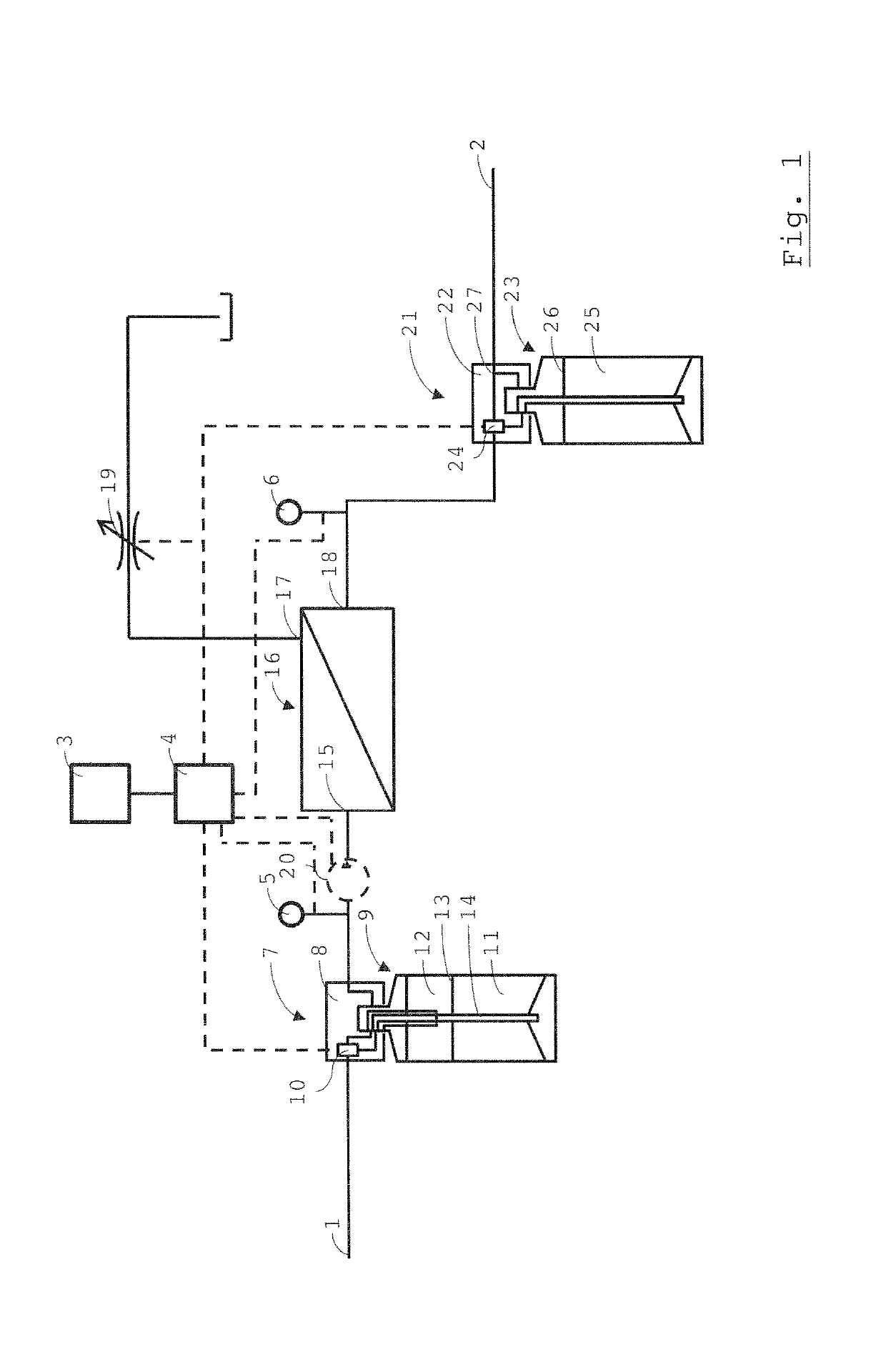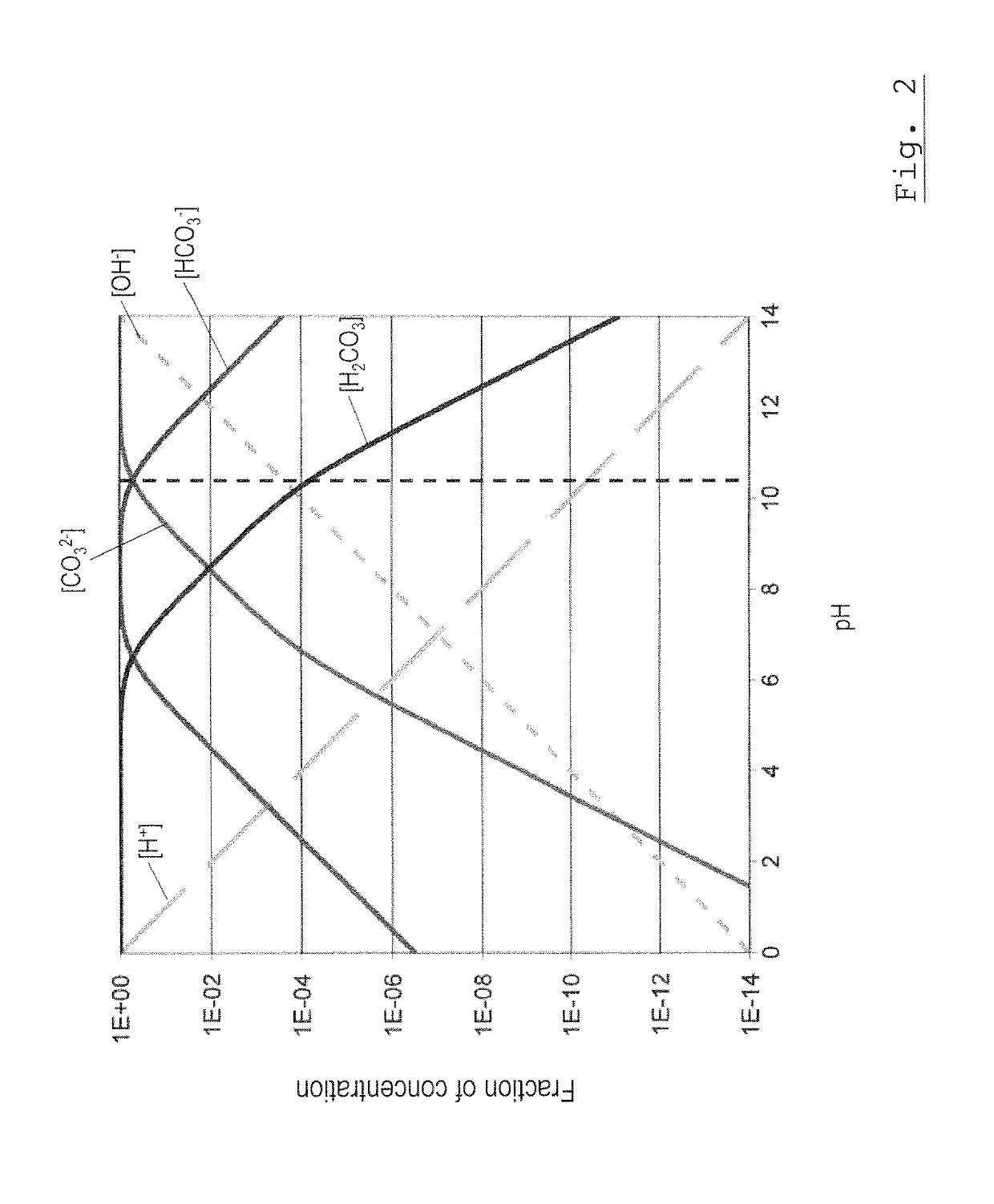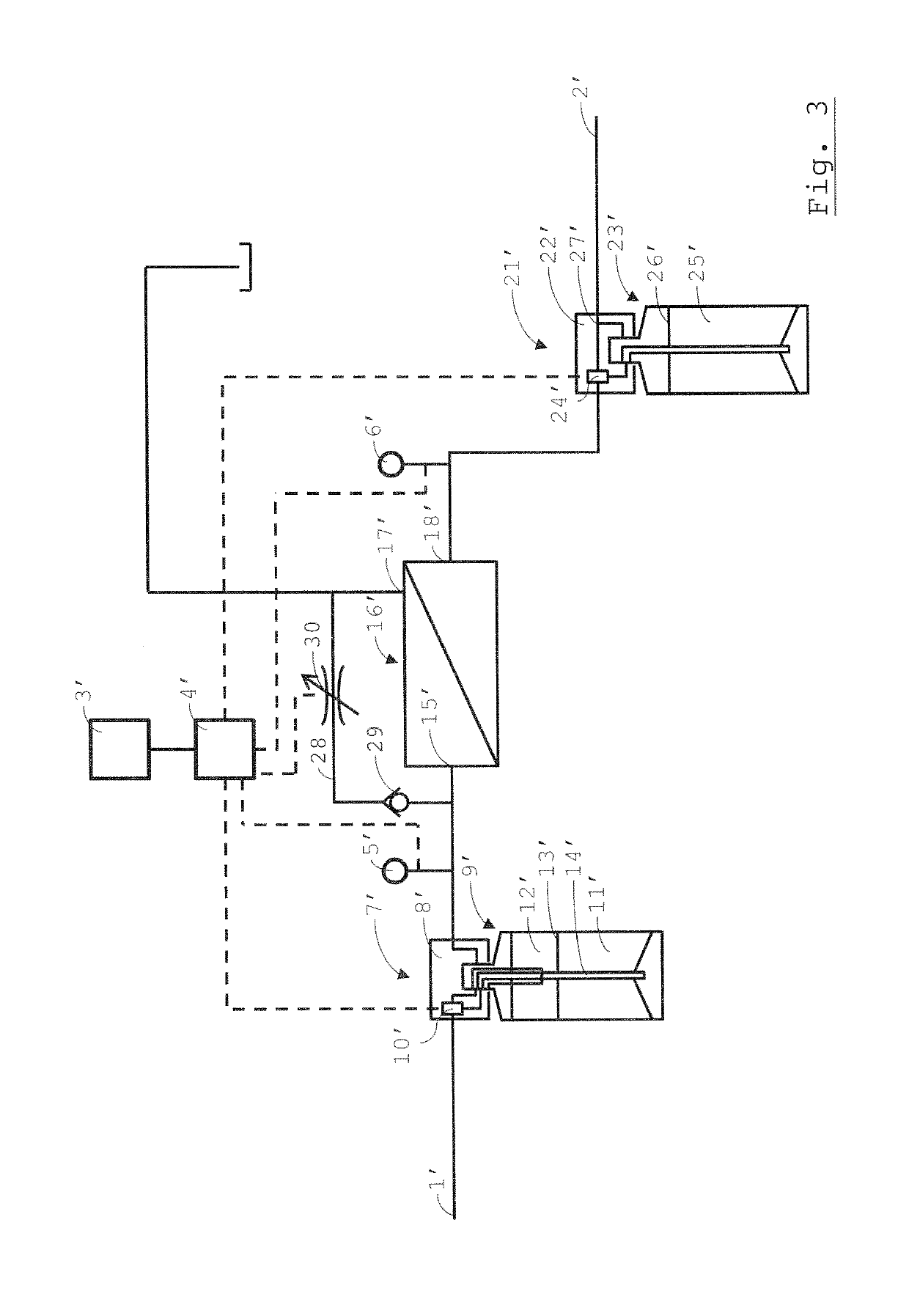Apparatus and method for treating an aqueous liquid
a technology of aqueous liquid and apparatus, which is applied in the direction of multi-stage water/sewage treatment, water/sewage treatment by ion exchange, water treatment parameter control, etc. it can solve the problems of less effective liquid treatment device, less effective magnesium bicarbonate concentration, and complicated apparatus, so as to prevent the degassing of carbon dioxide, increase the amount of free carbon dioxide in the liquid, and increase the free carbon dioxide concentration
- Summary
- Abstract
- Description
- Claims
- Application Information
AI Technical Summary
Benefits of technology
Problems solved by technology
Method used
Image
Examples
Embodiment Construction
[0068]A liquid treatment apparatus for the treatment of an aqueous liquid includes an inlet 1 and an outlet 2. The liquid may be mains drinking water, in which case the inlet 1 may include a coupler for connecting the apparatus to the mains drinking water supply. The outlet 2 may include at least one coupler for connecting the apparatus to one or more conduits for conducting liquid to one or more appliances (not shown). An example of such an appliance is a coffee machine, e.g. for a catering establishment.
[0069]The apparatus is configured to allow the aqueous liquid to meet several requirements simultaneously. This is the case even if the liquid received at the inlet is relatively saline, such as might be the case for drinking water in coastal regions. The requirements are the pH, the TDS (total dissolved solids) and the carbonate hardness (also referred to as alkalinity or temporary hardness).
[0070]In the illustrated embodiment, the apparatus includes an interface 3 for receiving i...
PUM
| Property | Measurement | Unit |
|---|---|---|
| thickness | aaaaa | aaaaa |
| thickness | aaaaa | aaaaa |
| thickness | aaaaa | aaaaa |
Abstract
Description
Claims
Application Information
 Login to View More
Login to View More - R&D
- Intellectual Property
- Life Sciences
- Materials
- Tech Scout
- Unparalleled Data Quality
- Higher Quality Content
- 60% Fewer Hallucinations
Browse by: Latest US Patents, China's latest patents, Technical Efficacy Thesaurus, Application Domain, Technology Topic, Popular Technical Reports.
© 2025 PatSnap. All rights reserved.Legal|Privacy policy|Modern Slavery Act Transparency Statement|Sitemap|About US| Contact US: help@patsnap.com



